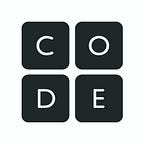At Code.org, we frequently speak about the issues of access and equity in computer science — females and many minority groups are still significantly underrepresented in tech. Diversity isn’t just about gender or race; it’s also about giving students opportunity regardless of socioeconomic and geographic disadvantages. Code.org has already shown success in urban school districts like Oakland, Los Angeles, and Chicago, but we’re regularly asked: how can we reach rural schools?
Compared to urban and suburban schools, rural and small-town schools are less likely to offer computer science courses, in part because of the geographic challenges of preparing CS teachers who live far from population centers. If computer science is going to continue to be an essential component of 21st-century education, we must ensure that the opportunity to learn is not dependent on where you live.
This year, Code.org has more than doubled the number of students we reach at rural schools through our teacher professional learning program. Over 20% of the teachers we’ve prepared are in rural and small-town areas, roughly matching the current distribution of students across the US — despite the increased challenges of reaching these areas.
And in rural and small towns, 83% of parents and 64% of principals believe offering computer science is more or equally as important as any required course.
Principals say the most significant obstacles to increasing access to K-12 computer science are the lack of teachers with the necessary skills and funding to prepare or hire teachers — on top of other challenges schools may face including small class size, unreliable internet access, or teachers stretched thin across many subjects.
With these challenges in mind, it can be hard to justify hiring a full-time computer science teacher. And, they don’t need to.
Our goal at Code.org is to empower teachers from every type of background to be able to teach computer science — in addition to their other subjects. Most teachers we work with don’t have a broad technology background; they’re math, English, and history teachers. Through this inclusive approach, we’ve prepared over 72,000 teachers to teach computer science through our professional learning program at no cost to teachers and districts.
One teacher is Renee Yake from Iron Mountain, MI who attended our Professional Learning Program in 2017 and has since officially started a Computer Science Principles course at her rural high school. Years ago, she wanted to integrate programming into the high school math curriculum and began to teach her students to program their graphing calculators.
“The hardest part for me is that I already teach AP Calculus, Precalculus, and Algebra 2, so I don’t have time to be a computer science expert. But I think that’s a good thing. Now if the kids say, ‘I don’t know how this works,’ I say, ‘well let’s learn together.’”
Students want to learn
Students in the US value computer science and the opportunities it brings; 86% of students say computer science is going to be important in their future careers. But in rural and small-towns, students and teachers may not be aware of the connections to computer science outside of Silicon Valley and large cities.
Larry Davison is a computer science coordinator for Educational Service District 105 in Yakima, WA. His school district has been working with a local fruit company — Washington Fruit — to launch a career expo for freshman and spotlight the emerging tech careers in students’ backyards.
“We’re only about a year or two away from robotic [fruit] pickers. Chances are, the jobs their mom and dad are doing won’t be around much longer.” As the agriculture industry adapts to demands for increased production, the need for workers with computer science backgrounds will be irreplaceable in the future of farming.
Investments in computer science education across the United States can help local communities offer the education students need to be competitive in the 21st-century while bringing high-tech, high-skill jobs to every city.
“Our students don’t want to be left behind. They deserve these opportunities,” says Renee. “My students have never said ‘I’m never going to use this [computer science].’ It’s everywhere. It’s not the future; it’s now.”
Hadi Partovi, Code.org
